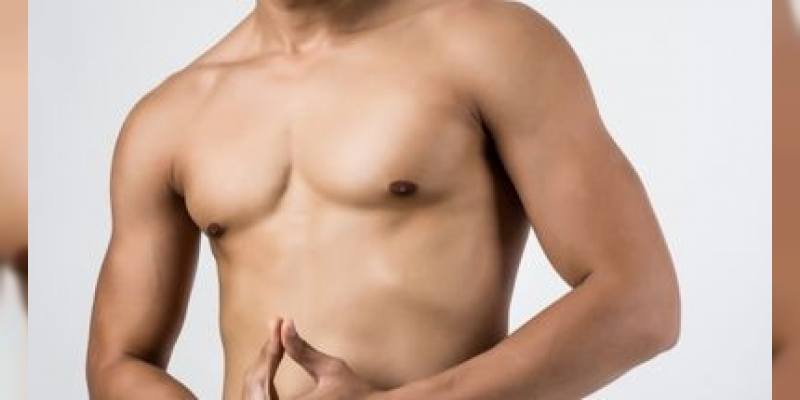
Breast tissue in men and women does not differ much in responsiveness to hormones. From this point of view, male and female breast structures do not differ structurally from the newborn period to the onset of puberty. However, with the onset of puberty, the development that occurs in breast tissue with the effect of rising hormones begins to differ between male and female breast tissue. The development of breast tissue with puberty is accepted as a sign of sexual differentiation.
In women, breast development begins as a result of the effect of rising hormones with the onset of puberty. Under normal conditions, the androgen/estrogen balance that occurs in men does not allow a significant breast enlargement to occur. Therefore, breast enlargement in women is considered a sign of puberty, while in men it is considered a 'disorder'.
Significant and excessive breast development in men is called gynecomastia. According to the latest data of studies, it has been reported that 32-36% of men have gynecomastia. This significant growth in the breast area in men can be seen in infancy as well as in advanced ages. However, the most common diagnosis corresponds to pubertal, that is, adolescence periods. Gynecomastia usually starts between the ages of 10-12 and reaches its highest frequency between the ages of 13-14. Gynecomastia, which is mostly seen in adolescence, ie the problem of significant breast enlargement in men, occurs in an undetermined manner and can be treated surgically if it is permanent.
The fact that the breast tissue in men grows significantly and becomes similar to the female breast is a condition that may have many reasons behind it. We can list these reasons as follows:
Estrogen hormone; The development, elongation or branching of the breast ducts in the body is due to the effect of estrogen. The complex biological control of breast tissue is provided by hormones, especially estrogen. In this regard, the imbalance in the androgen/estrogen hormone in men can cause the breasts to enlarge.
Irregularity in androgen hormone; are hormones that initiate sexual differentiation and are responsible for creating secondary male physical characteristics (thick voice, beard, mustache, etc.). These hormones are also found in women as precursors of the hormone estrogen. The basis of breast growth in men is the inability of androgen hormone to balance with estrogen hormone during puberty or androgen insensitivity syndromes.
Growth factors, growth and nutritional conditions of the person determine all hormonal balances. All the factors that the body is exposed to during the growth period can cause breast enlargement in men.
It is possible to classify breast enlargement in men under two main headings.
Physiological Gynecomastia; Breast enlargement in men due to physical and hormonal changes, and therefore developments, is due to changes in certain periods of human life. In this respect, breast enlargement occurring in the newborn period can be classified as breast enlargement occurring during the transition to puberty and breast enlargement occurring after the age of 60.
Pathological Gynecomastia; are breast enlargements that occur due to diseases. Their emergence due to diseases causes them to occur depending on many factors that will cause the disease. These factors are adverse conditions such as cannabis use, liver disorders, testicular disorders.
In breast enlargement experienced in men, treatment should be applied by taking into account the cause of the enlargement in the breast and the period in which the breast enlargement takes place.
Ninety percent of breast enlargements, the cause of which cannot be determined, that occur with adolescence can be corrected within 3 years without treatment. With the treatment of these conditions, improvement is achieved within 6 months.
In cases of gynecomastia less than 4 years after the breast enlargement was observed, medical treatment should be preferred at the first stage.
Surgical treatment should be preferred in cases of breast enlargement more than 4 years from the onset. From this stage on, any treatment performed with medication or exercises will not produce the expected effect. Surgical treatment is possible.
Breast enlargement in men has 3 degrees in terms of surgical treatment:
In cases of breast enlargement in men, treatment in adulthood is only possible through surgical intervention.
Excisional Treatment: With this surgical intervention method applied in cases of breast enlargement in men, tissue is removed from the breast. Excess tissue in the breast is removed by entering the breast with a defined border from the darkness around the nipple. If deemed necessary, the excess tissue in the breast can be removed along with the skin part determined to be excessive. The only negative side of this surgical method is that there is a significant scar around the nipple after the operation. This scar that occurs around the nipple does not go away in a short time and can disturb the person.
Liposuction Treatment: This method, which is an option in the treatment of breast enlargement in men, is defined as fat suction. In this method, only 1-2 mm incisions are made in the breast tissue, and the excess fat in the breast tissue is absorbed and emptied through the thin tubes extended into the tissue through these incisions. The positive side of this method compared to the other method is that there is no scar after the operation, since the incisions created for application are made at the maximum size. This application, which is performed through local anesthesia, does not require hospitalization. Therefore, the healing process takes place faster and recovery is provided in more comfortable conditions.
You can complete all your transactions faster by making an online appointment quickly...
